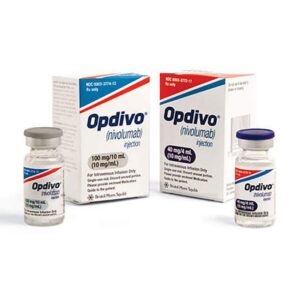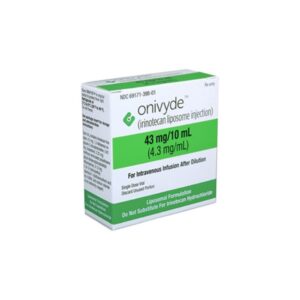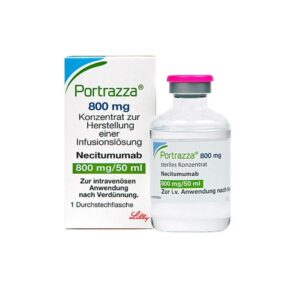Rubraca (rucaparib) for sale – Buy Rubraca (rucaparib) Online
What is Rubraca (rucaparib) for?
Rubraca (rucaparib) is indicated as monotherapy for:
- the treatment of patients with deleterious BRCA mutation (germline and/or somatic) associated advanced ovarian cancer, who have been treated with two or more chemotherapies[1]. Patients should be selected for therapy based on the FDA-approved FoundationFocus CDxBRCA test (Foundation Medicine Inc.)[2,1]. Approximately 15 to 20% of patients with ovarian cancer have a BRCA gene mutation[3].
- for the maintenance treatment of adult patients with recurrent epithelial ovarian, fallopian tube, or primary peritoneal cancer who are in a complete or partial response to platinum-based chemotherapy[1].
How does Rubraca (rucaparib) work?
BRCA genes are involved with repairing damaged DNA and normally work to prevent tumour development.
However, mutations of these genes may lead to certain cancers, including ovarian cancers. Rubraca (rucaparib) is a poly ADP-ribose polymerase (PARP) inhibitor that blocks an enzyme involved in repairing damaged DNA. By blocking this enzyme, DNA inside the cancerous cells with damaged BRCA genes may be less likely to be repaired, leading to cell death and possibly a slowdown or stoppage of tumour growth[3].
Where has Rubraca (rucaparib) been approved?
Rubraca (rucaparib) was approved by:
- Food and Drug Administration (FDA), USA:
- on December 19, 2016, for the treatment of patients with deleterious BRCA mutation (germline and/or somatic) associated advanced ovarian cancer who have been treated with two or more chemotherapies[1]
- on April 6, 2018, for the for the maintenance treatment of adult patients with recurrent epithelial ovarian, fallopian tube, or primary peritoneal cancer who are in a complete or partial response to platinum-based chemotherapy[1]
- European Medicines Agency (EMA), EU, on May 23, 2018, for the treatment of patients with:
- platinum sensitive, relapsed or progressive, BRCA mutated (germline and/or somatic), high-grade epithelial ovarian, fallopian tube, or primary peritoneal cancer[7]
How is Rubraca (rucaparib) taken?
The standard dosage is:
- 600 mg orally twice daily.
Patients should be monitored for hematologic toxicity at baseline and monthly thereafter, and use of Rubraca (rucaparib) should be discontinued if myelodysplastic syndrome (MDS) / acute myeloid leukemia (AML) is confirmed[1].
Complete information about Rubraca (rucaparib) dosage and administration can be found in the references section.
Note: Consult your treating doctor for personalised dosing.
Are there any known side effects or adverse reactions of Rubraca (rucaparib)?
Common adverse reactions
The most common adverse reactions listed in the prescribing information include:
- nausea
- fatigue
- vomiting
- anemia
- abdominal pain
- dysgeusia (distortion of the sense of taste)
- constipation
- decreased appetite
- diarrhoea
- thrombocytopenia (deficiency of platelets in the blood)
- dyspnea (difficult breathing)[1].
Serious adverse reactions
The serious adverse reactions listed in the prescribing information include:
- myelodysplastic syndrome/acute myeloid leukemia (MDS/AML).
Use in specific populations
Rubraca (rucaparib) can be fatal for a fetus, it is advised to avoid pregnancies and breast feeding.
For a comprehensive list of side effects and adverse reactions please refer to the official prescribing information[1].
References
- Summary of Product Characteristics [FDA]: Rubraca (rucaparib)[PDF]
Clovis Oncology Inc., Dec. 2016 - Foundation Focus CDXBRCA
Foundation Medicine, cited Jan 2017 - FDA grants accelerated approval to new treatment for advanced ovarian cancer
FDA, Dec 2016 - Approved Drugs: Rucaparib
FDA, Dec 2016 - Rare disease designations: EU/3/12/1049 EMA, cited Jan 2017
- Pending EC decisions: Rubraca EMA, 22/03/2018
- Summary of Product Characteristics [EMA]: Rubraca (rucaparib)[PDF]
Clovis Oncology Inc., May 2019
This content has been reviewed by a Medical Doctor.







Reviews
There are no reviews yet.